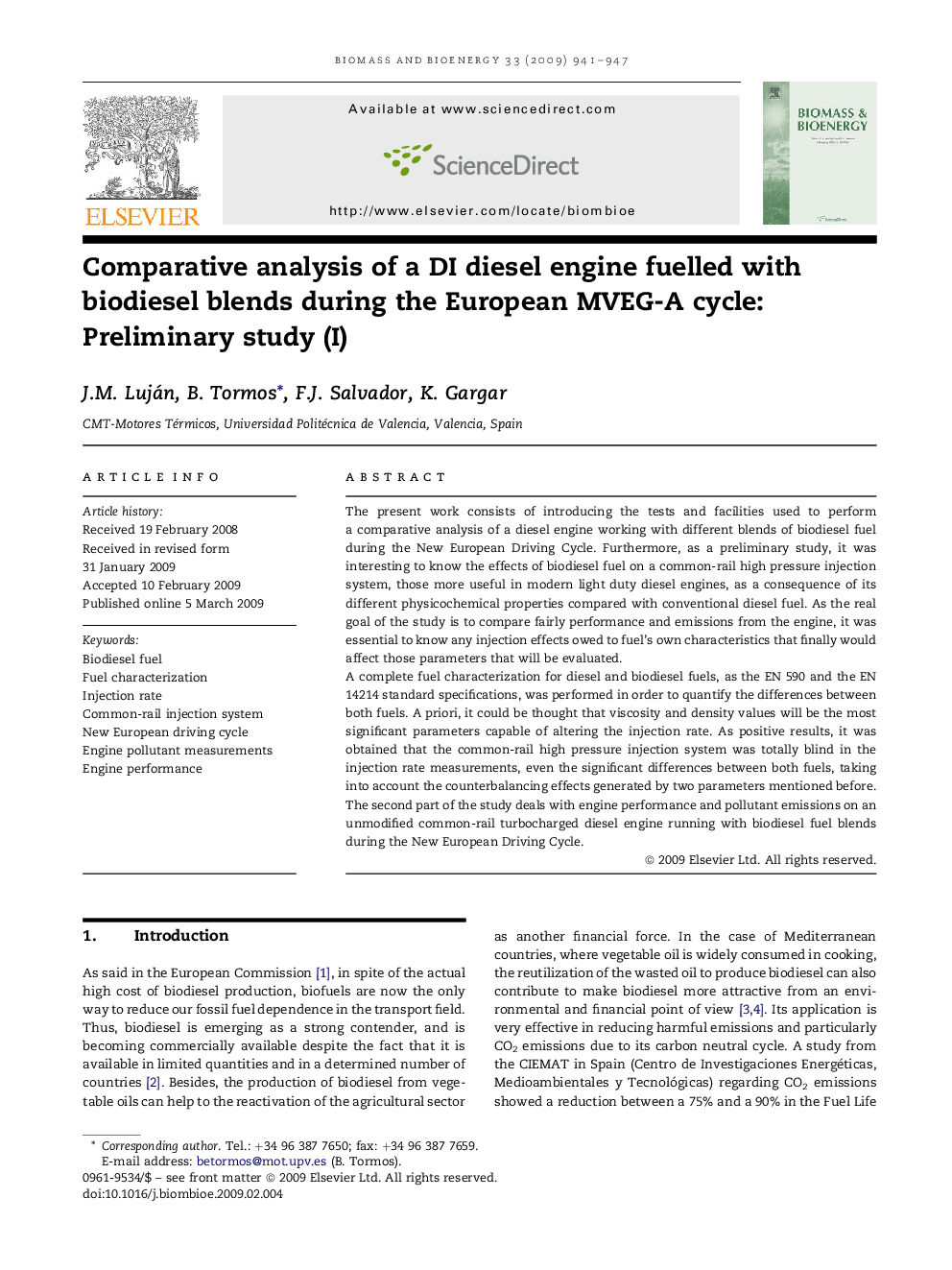| Article ID | Journal | Published Year | Pages | File Type |
|---|---|---|---|---|
| 678444 | Biomass and Bioenergy | 2009 | 7 Pages |
The present work consists of introducing the tests and facilities used to perform a comparative analysis of a diesel engine working with different blends of biodiesel fuel during the New European Driving Cycle. Furthermore, as a preliminary study, it was interesting to know the effects of biodiesel fuel on a common-rail high pressure injection system, those more useful in modern light duty diesel engines, as a consequence of its different physicochemical properties compared with conventional diesel fuel. As the real goal of the study is to compare fairly performance and emissions from the engine, it was essential to know any injection effects owed to fuel's own characteristics that finally would affect those parameters that will be evaluated.A complete fuel characterization for diesel and biodiesel fuels, as the EN 590 and the EN 14214 standard specifications, was performed in order to quantify the differences between both fuels. A priori, it could be thought that viscosity and density values will be the most significant parameters capable of altering the injection rate. As positive results, it was obtained that the common-rail high pressure injection system was totally blind in the injection rate measurements, even the significant differences between both fuels, taking into account the counterbalancing effects generated by two parameters mentioned before.The second part of the study deals with engine performance and pollutant emissions on an unmodified common-rail turbocharged diesel engine running with biodiesel fuel blends during the New European Driving Cycle.
